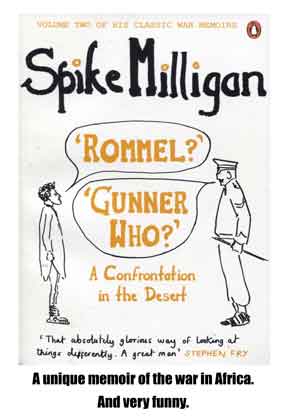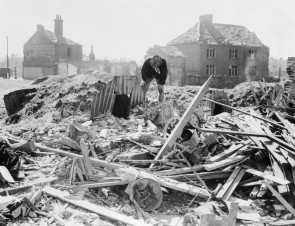
Photo from Jürgen Stroop Report to Heinrich Himmler from May 1943. The original German caption reads: “Smoking out the Jews and Bandits”

The original German caption reads: “Jews pulled from a Bunker”. Picture taken at Nowolipie street looking East, near intersection with Smocza street. In the back one can see ghetto wall with a gate.
Conditions inside the Warsaw Ghetto were becoming ever more desperate. The SS were systematically burning the whole area to the ground block by block. Those who attempted to shelter in the bunkers and cellars were eventually forced out if they were not burnt alive. Some were shot immediately, more were put on the trains to Treblinka where they were gassed upon arrival.
The armed resistance groups had little scope to fight back anymore. It had been an unequal struggle from the beginning but now the Germans were prepared for a fight and well armed. Only a small minority of Jews would survive the battle, an even smaller number of those involved in the fight would live to tell the tale. ‘Kazik’ – Simha Rotem – was one of a few members of the ZOB resistance group who did:
With the fire rampaging through every house in the Ghetto, the situation in the bunkers became untenable. Our bunker was filled with smoke, and when we were forced to leave it, we decided to make our way to the Central Ghetto.
We assembled in the courtyard before we left, standing in straight rows. I shall never forget the picture of the gathering: it was night, but the flames made it bright as day. Everything all around was on fire, walls were crashing down. We had to go through burning shops, with flames surrounding us on all sides. The heat was unbearable. Slivers of glass in the yards were melted.
…
We knew that a German tank had been set on fire in the Central Ghetto and that dozens of Germans had been killed in the uprising. Our losses were few. In the first three days the Germans didn’t take a single Jew out of the buildings.
After their attempts to penetrate the Ghetto had failed, they decided to to spare themselves casualties by destroying it from outside with cannon and aerial bombings. A few days later the Ghetto was totally destroyed. Those who survived continued living in bunkers. Apparently the Germans concluded there weren’t many Jews left in the Ghetto and decided it was safe to enter during the day.
At night they were careful and stayed outside: control of the Ghetto was in the hands of the ZOB, and we could walk around among the ruins without fear. So all communications operations between the groups, provisioning, and searching for survivors or bodies took place at night. …
We went out to search for food in empty bunkers and cellars. Once we went down to a cellar whose walls emitted waves of heat. My companions and I found ourselves walking on a kind of soft, light ground, like feathers. It was ash with scorched bodies lying in it.
In a corner we came on a barrel of honey. We dipped our hands in it and it was almost boiling. We licked that honey until we got sick.
At night we continued our reconnaissance patrols. The “streets” were nothing but rows of smoldering ruins. It was hard to cross them without stepping on charred bodies.
Once I came on a heap of bodies and heard a child’s weeping. As I approached, I saw a woman’s dead body hugging a living infant. I stood still a moment and then went on walking.
…
After eleven or twelve days of battle, most of the fighters were still alive. The Germans continued destroying the Ghetto from outside, with artillery bombardments and air attacks; daily sappers were sent to set fire and explode every cellar and bunker.
In this situation, we couldn’t get into a battle with them anyway, and it was only a question of time until we would all be buried alive under the debris. The command staff therefore decided to find a way to rescue the fighters who could still be saved so they could continue fighting the Germans in other conditions.
See Kazik: Memoirs of a Warsaw Ghetto Fighter

The original German caption reads: “Destruction of a housing block”. A housing block burns during the suppression of the Warsaw ghetto uprising.

The original German caption reads: “Bandits jump to escape capture”. A Jewish man leaps to his death from the top story window of an apartment block.
{ 0 comments }
















